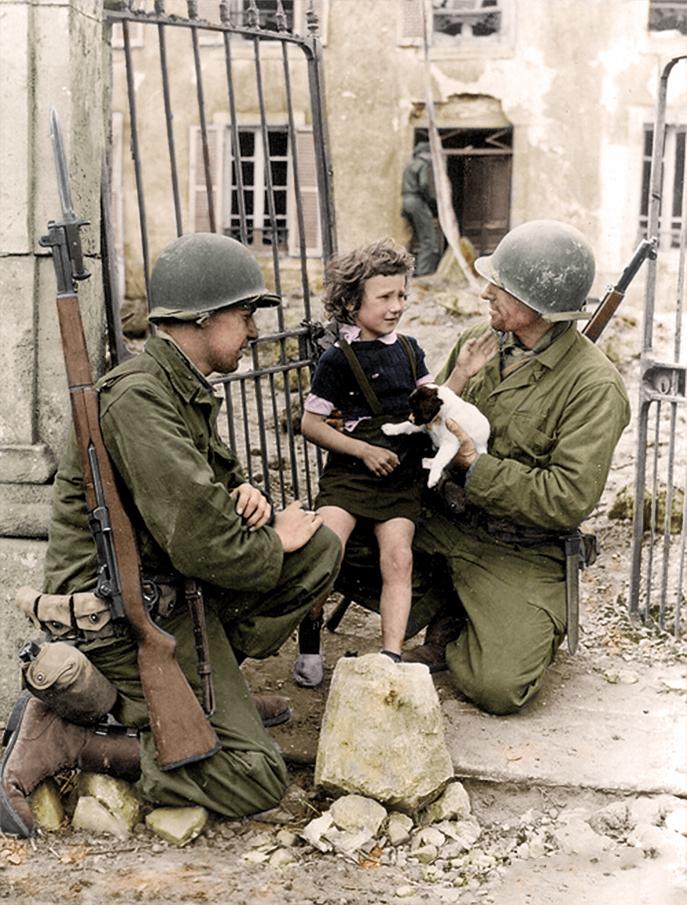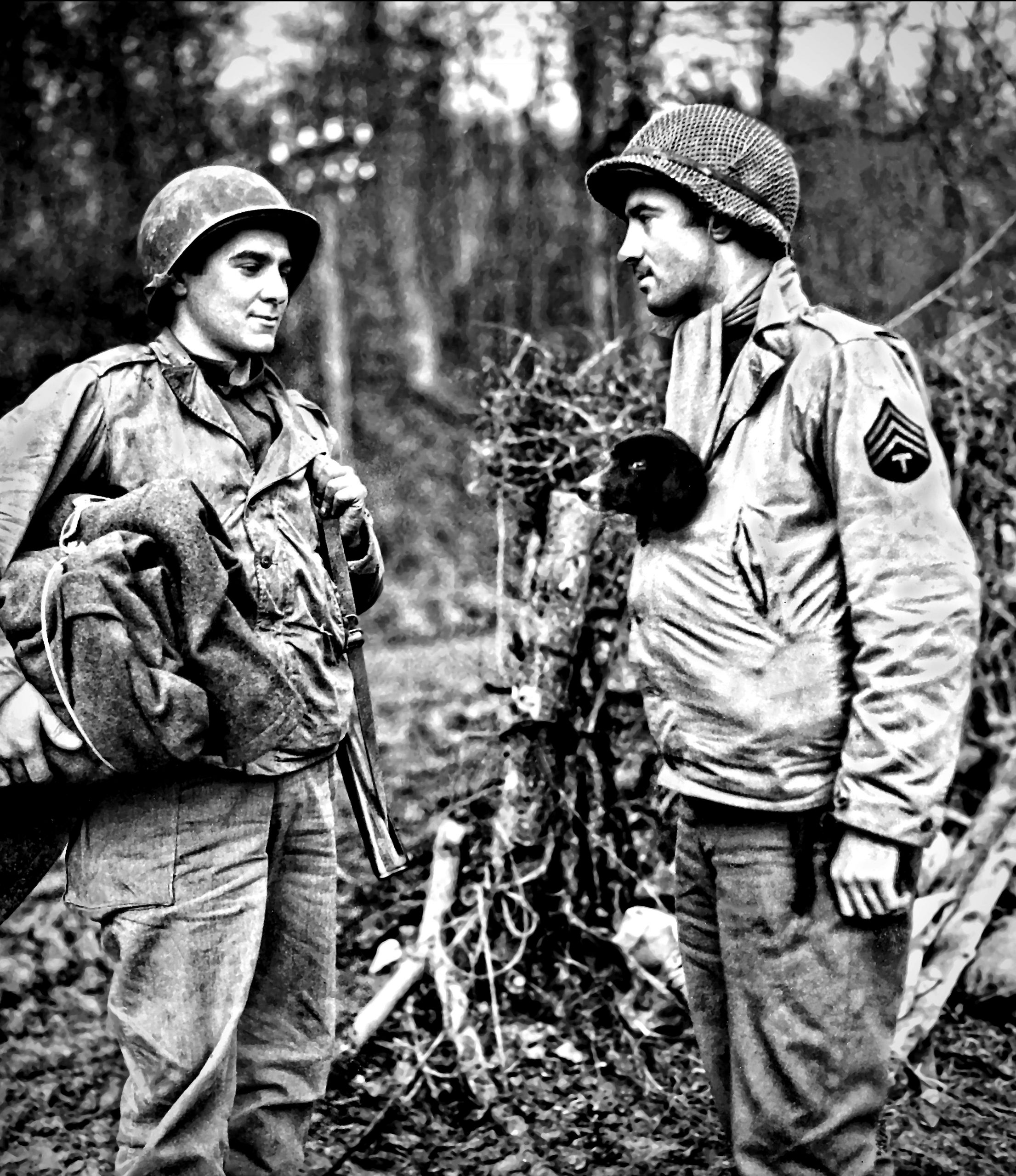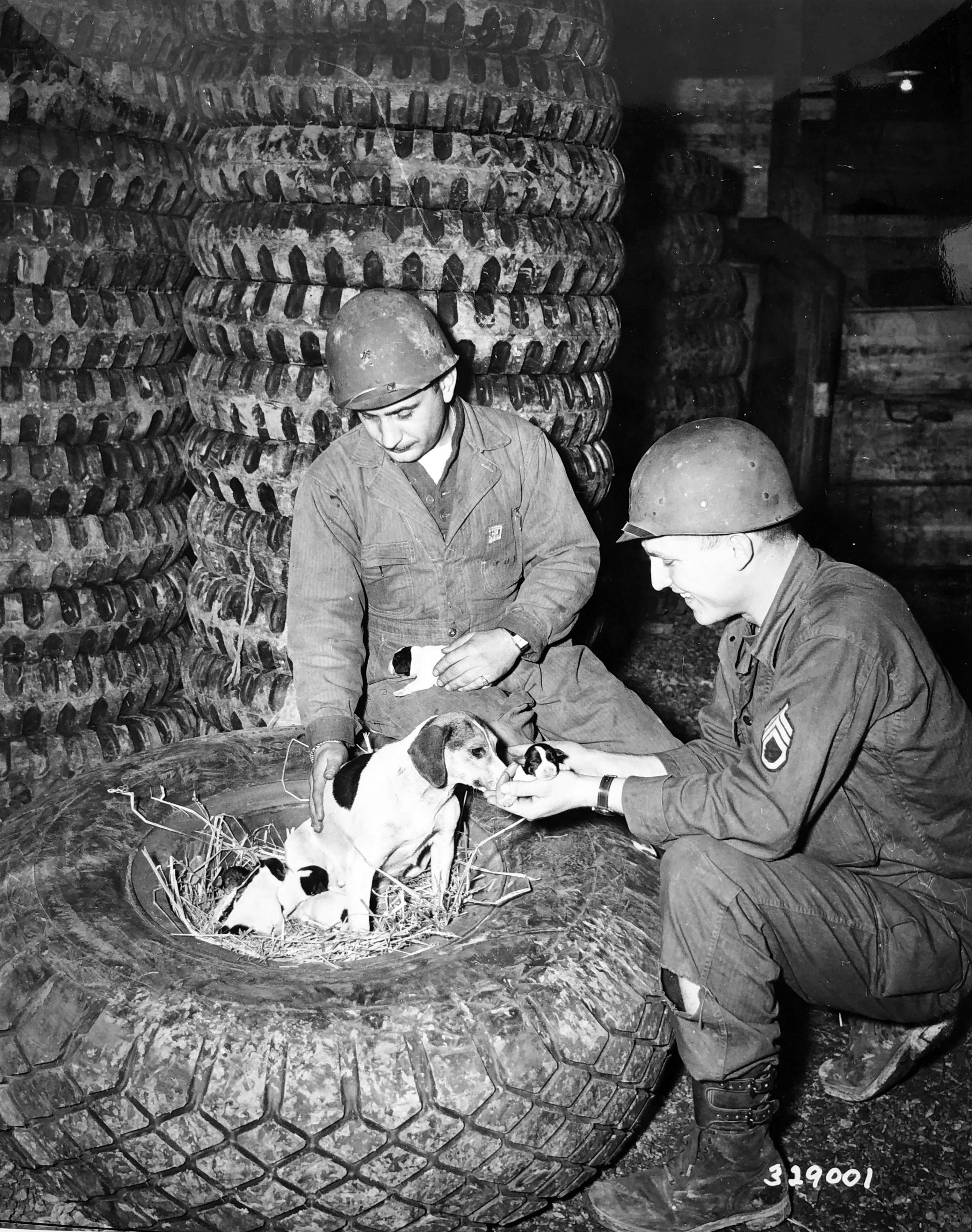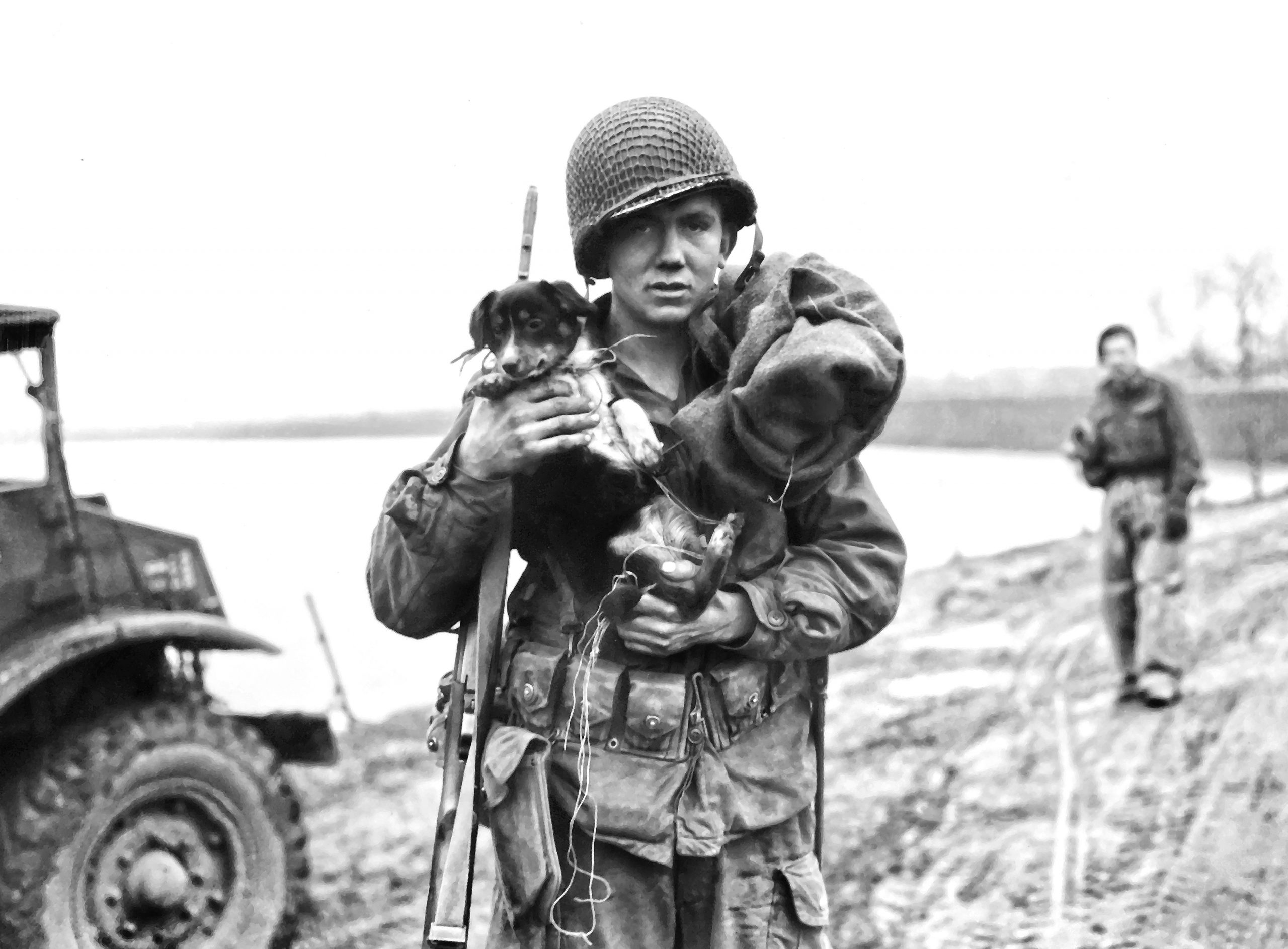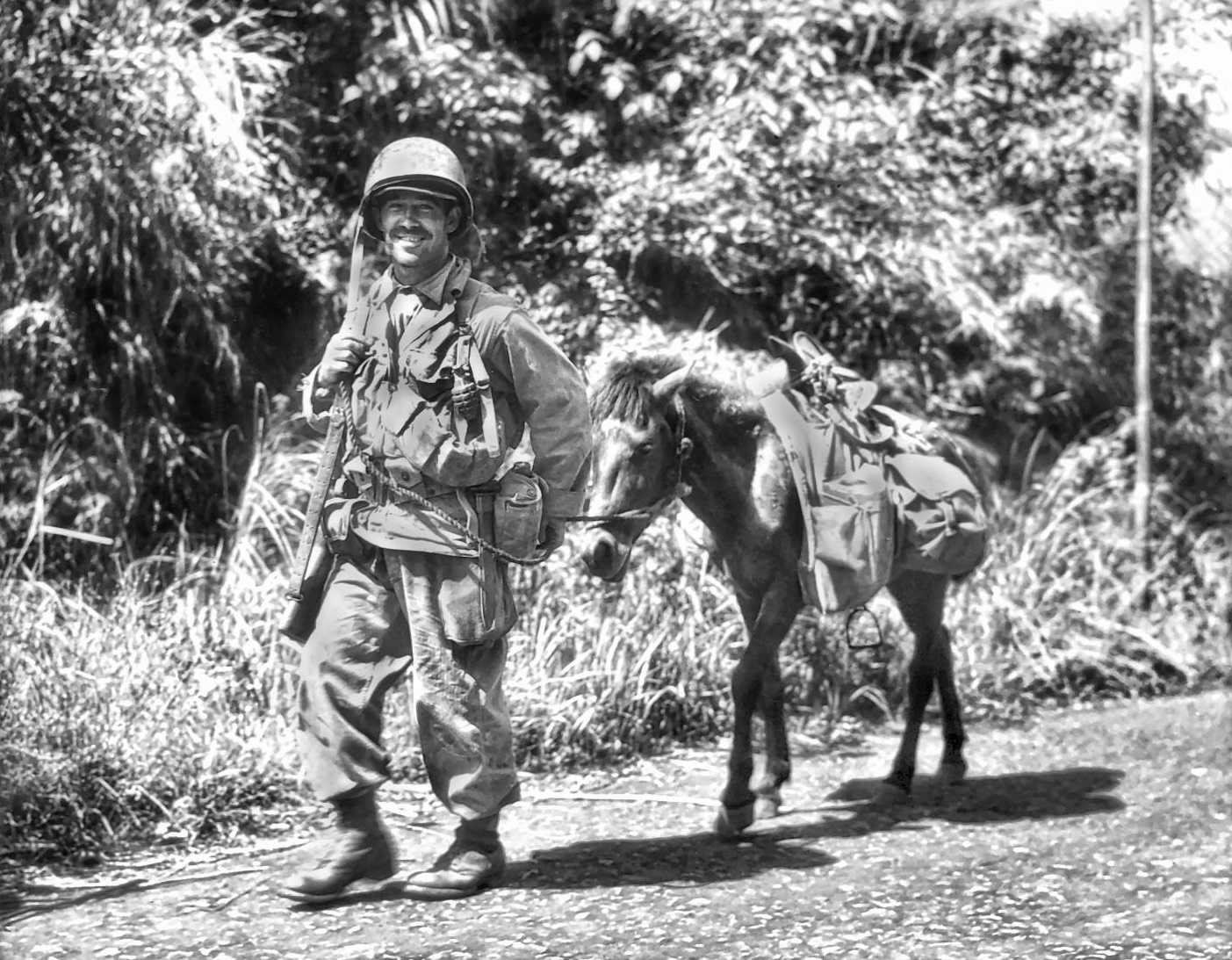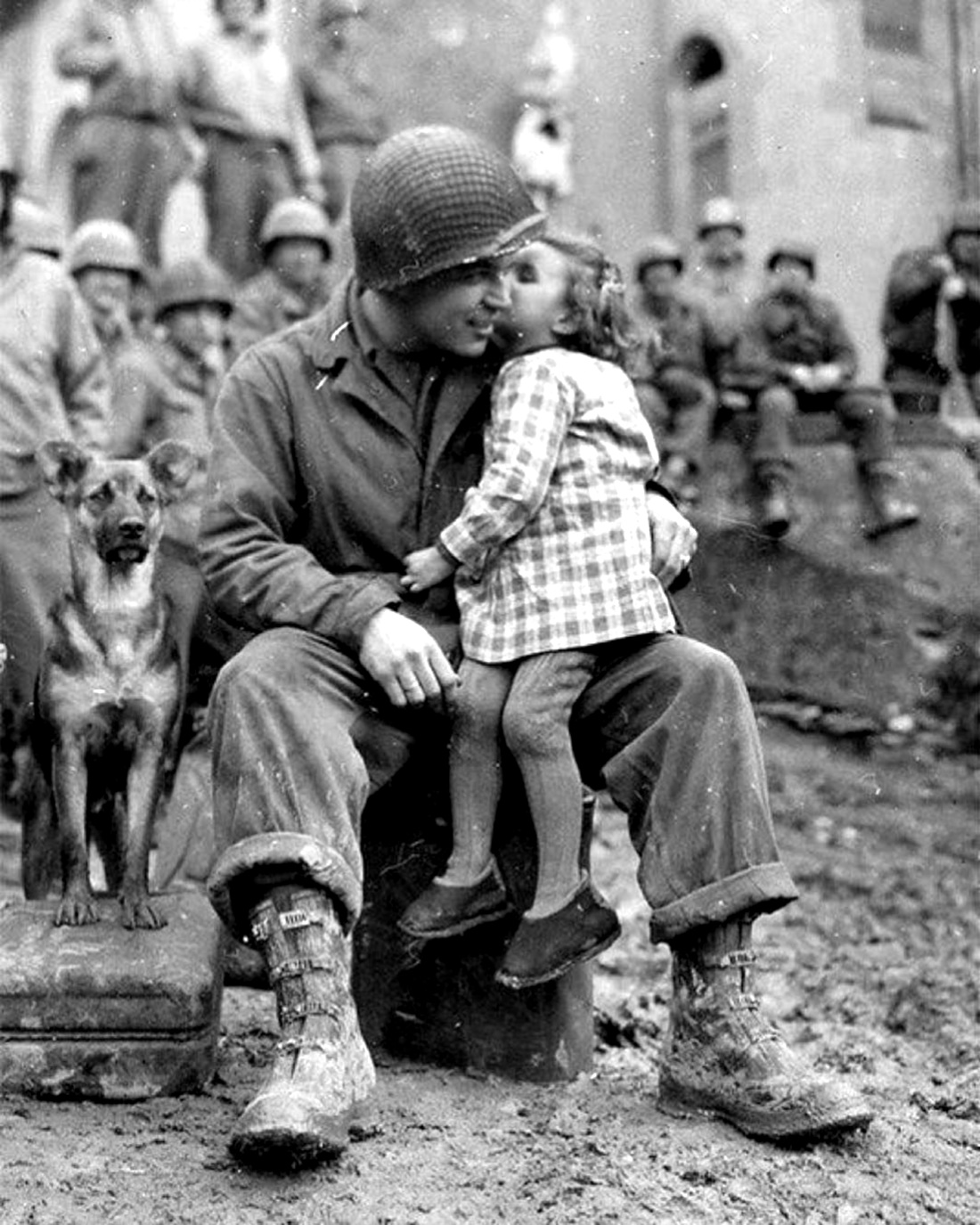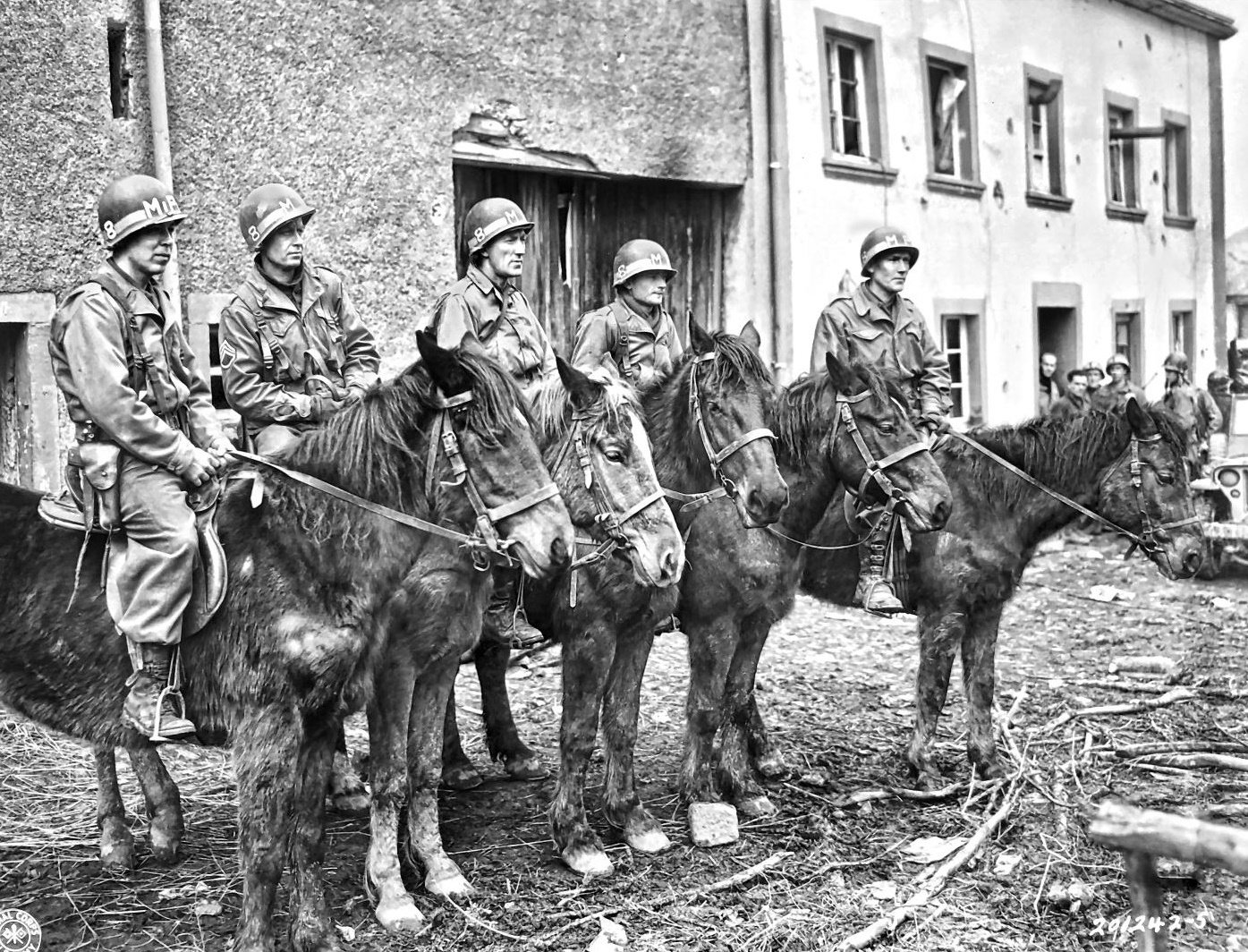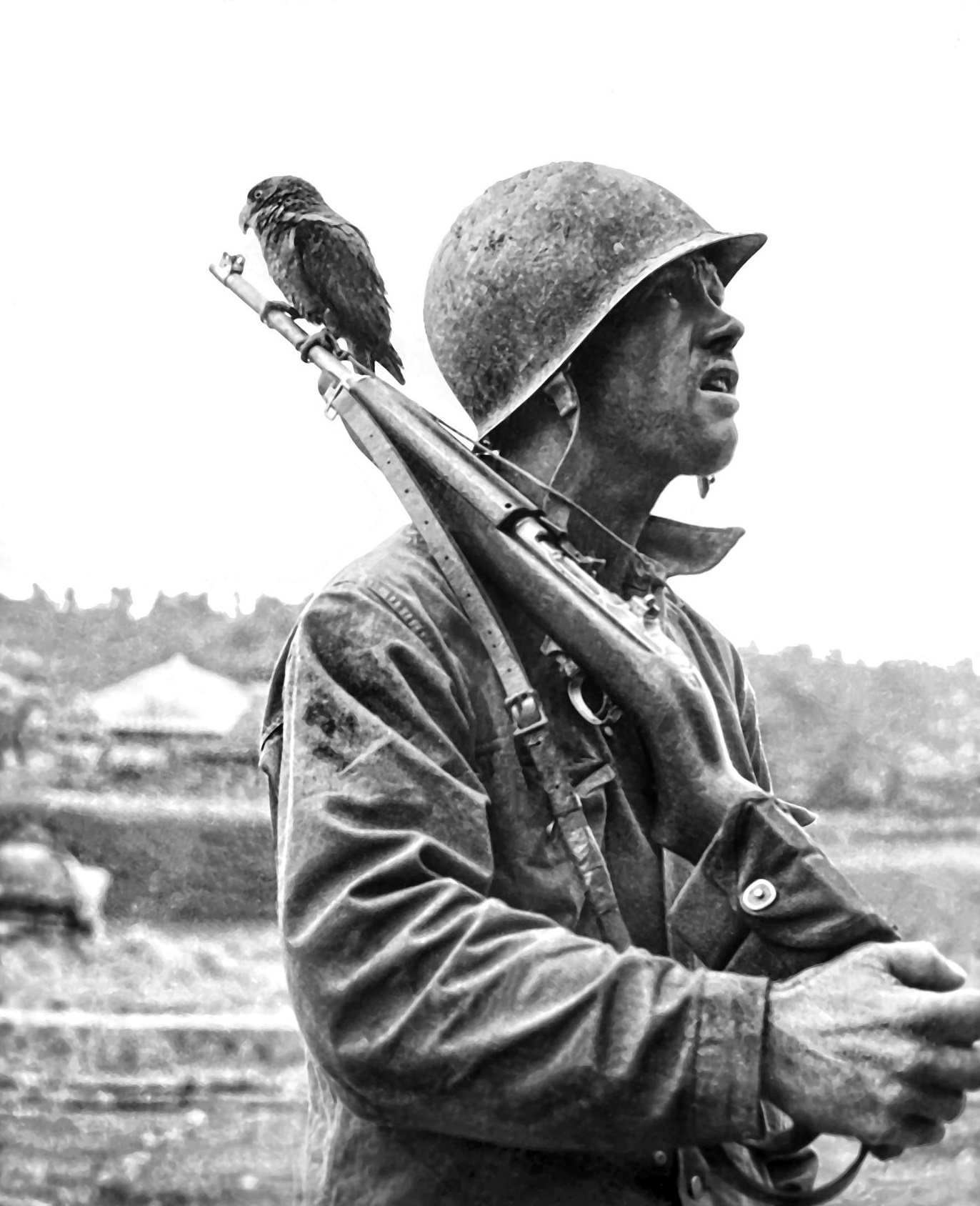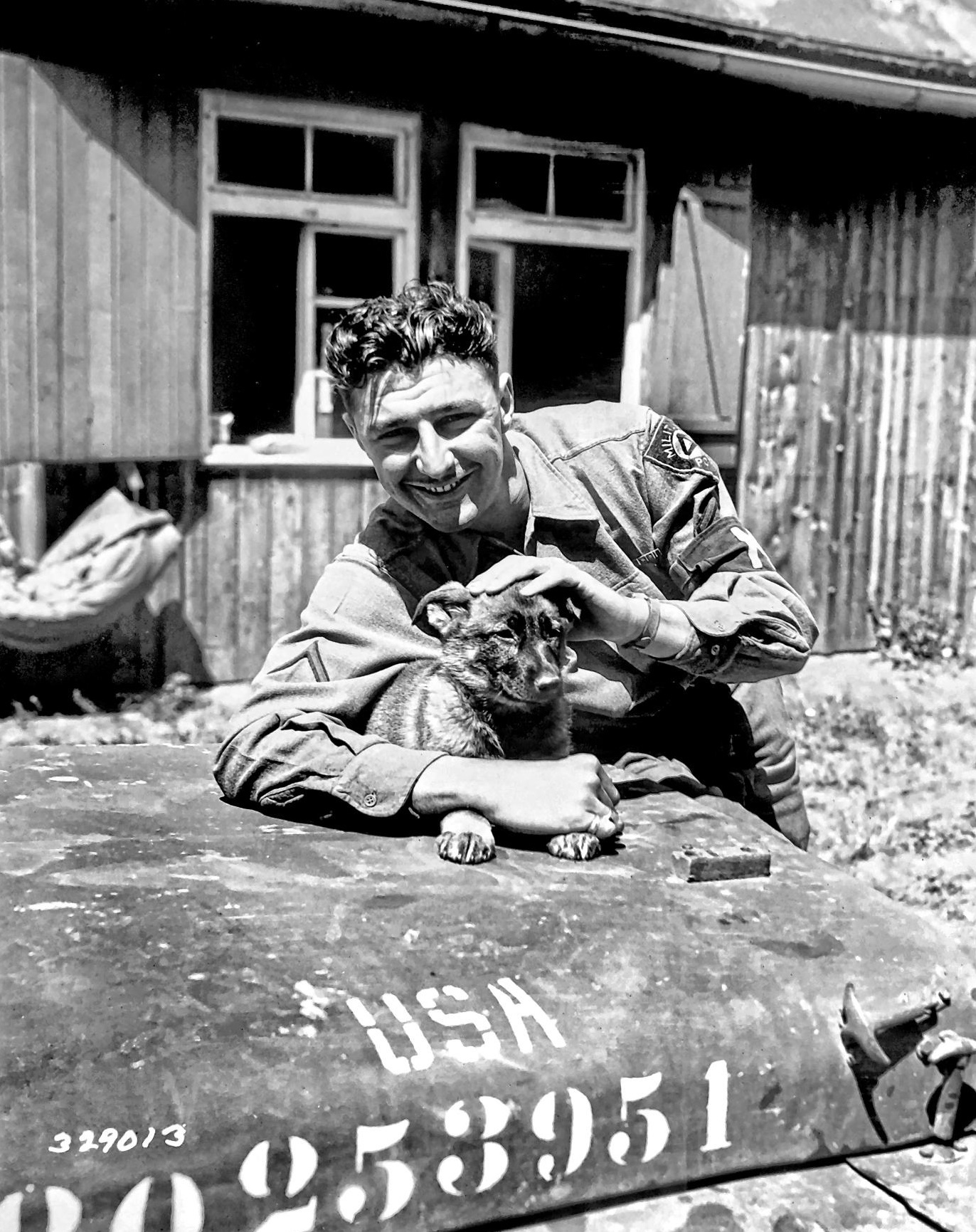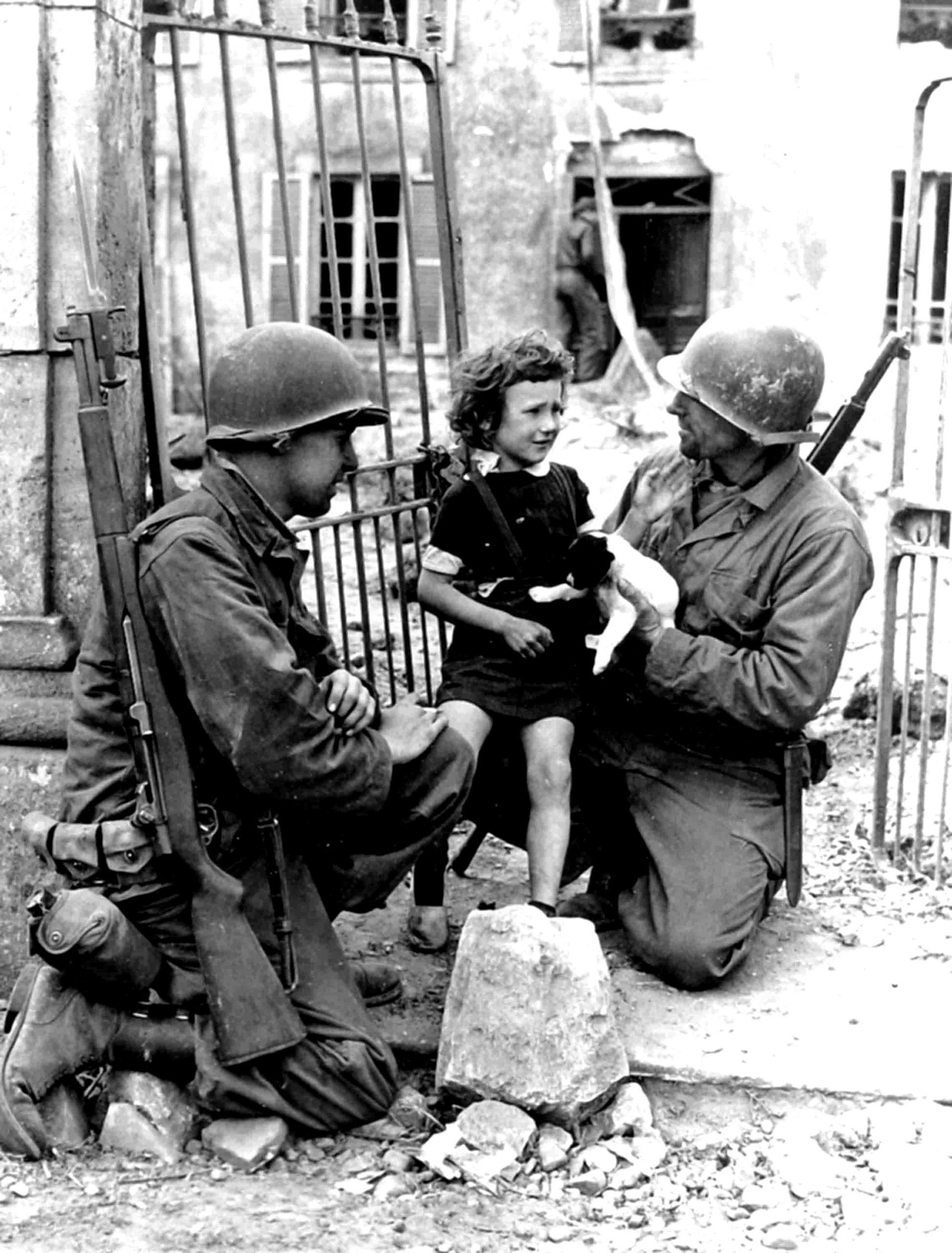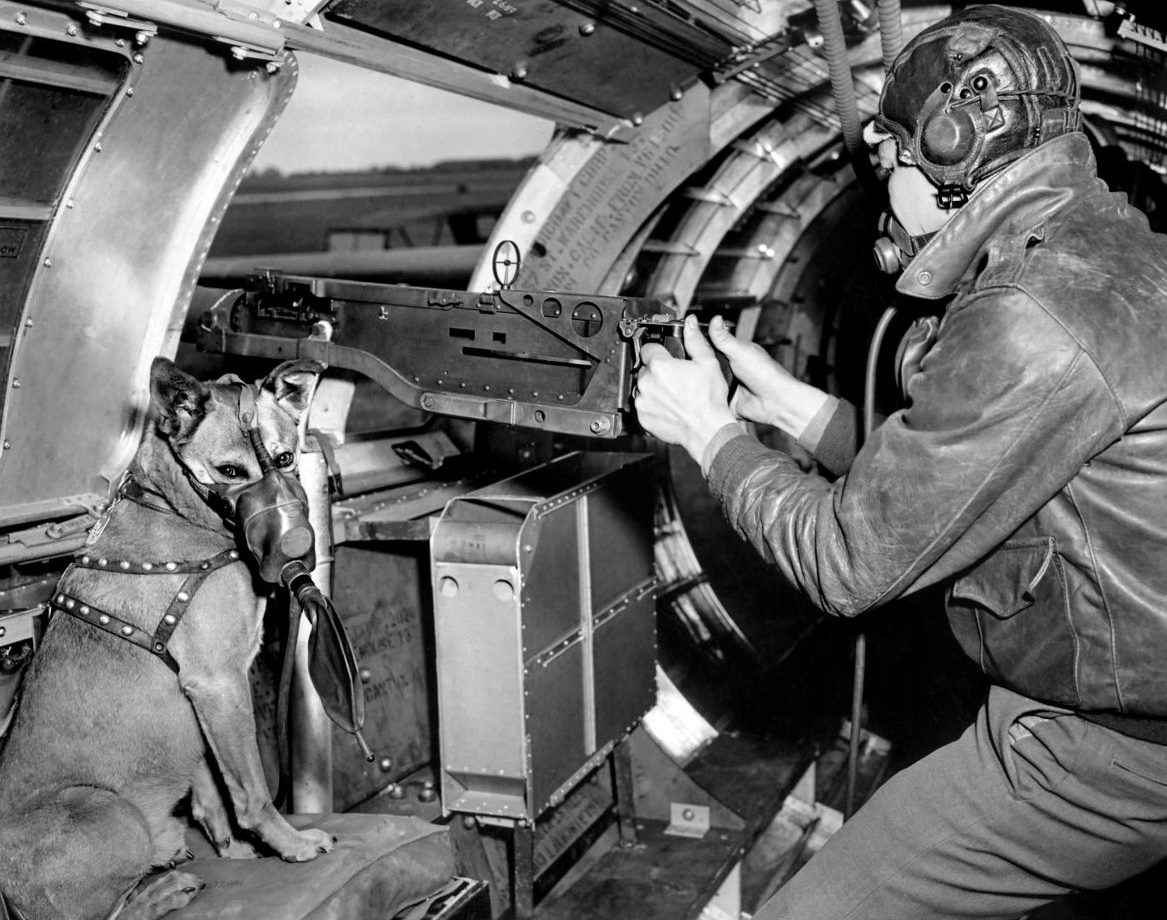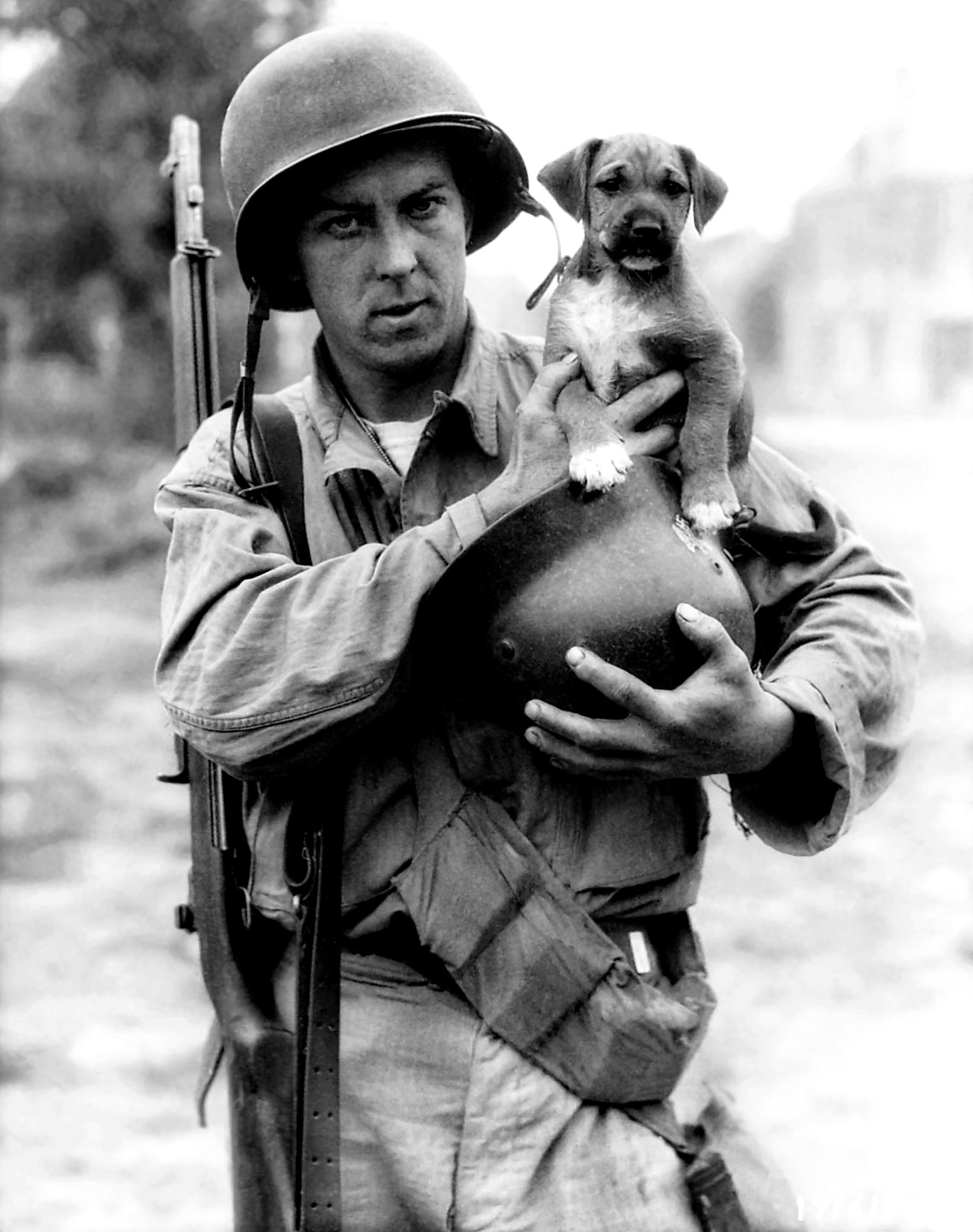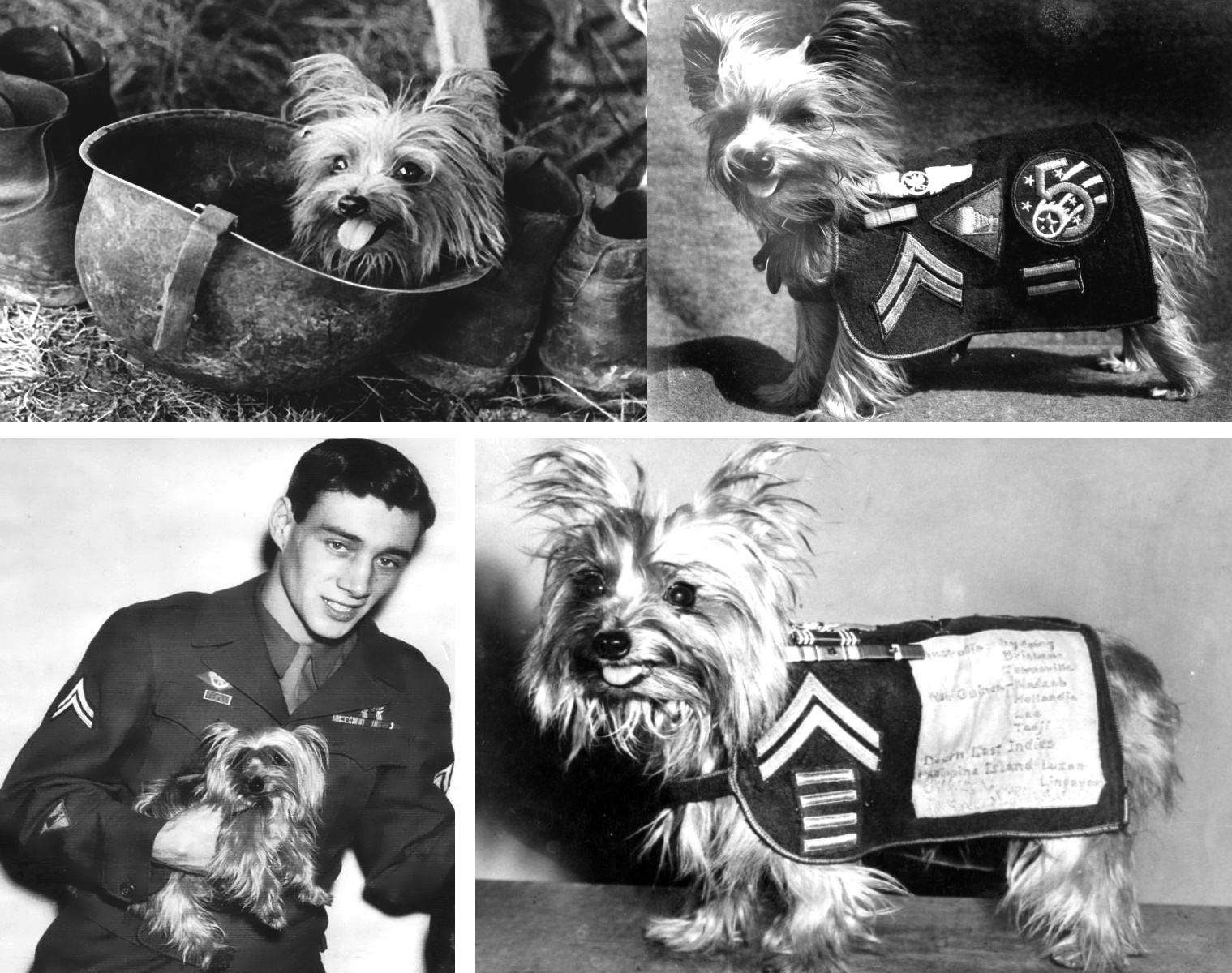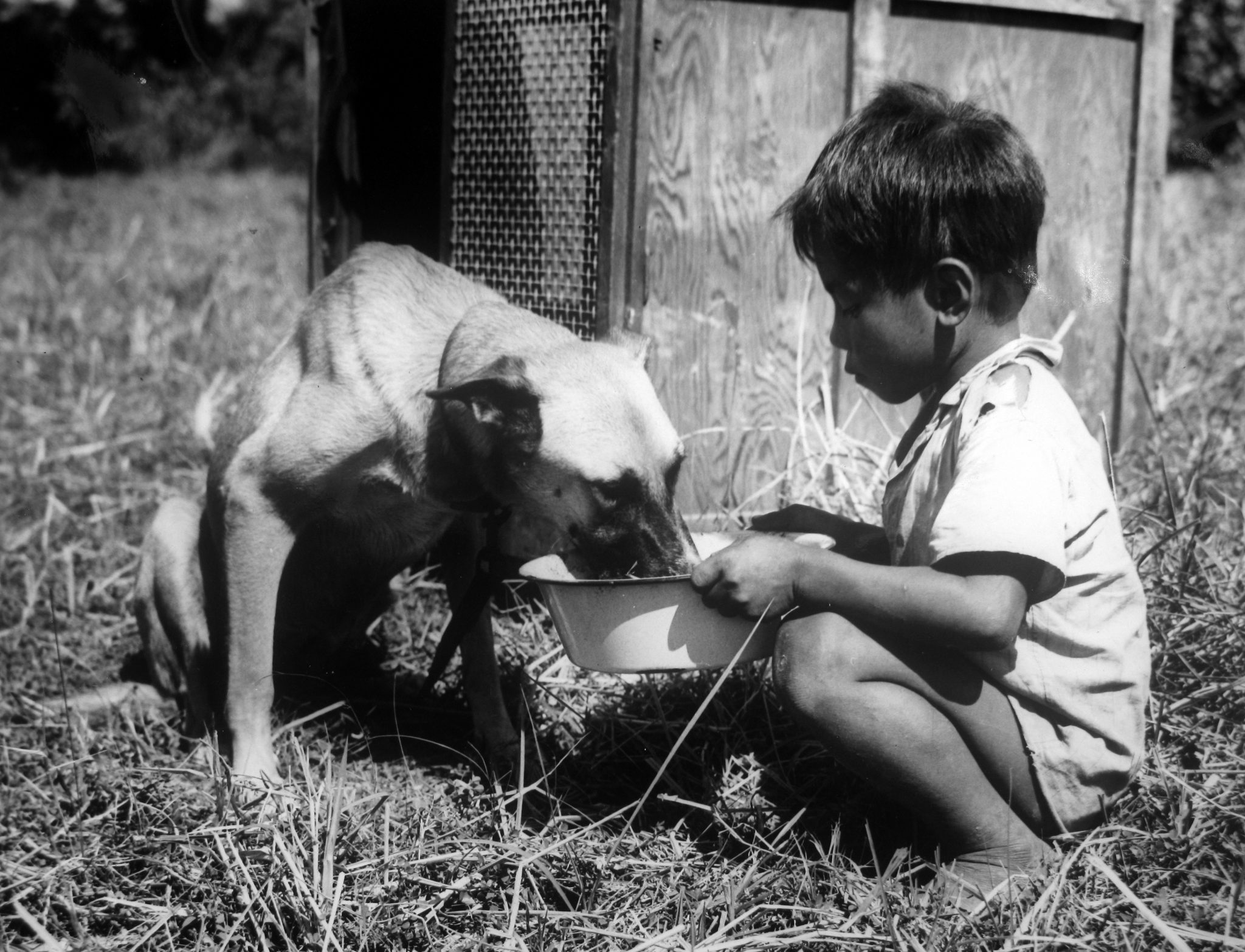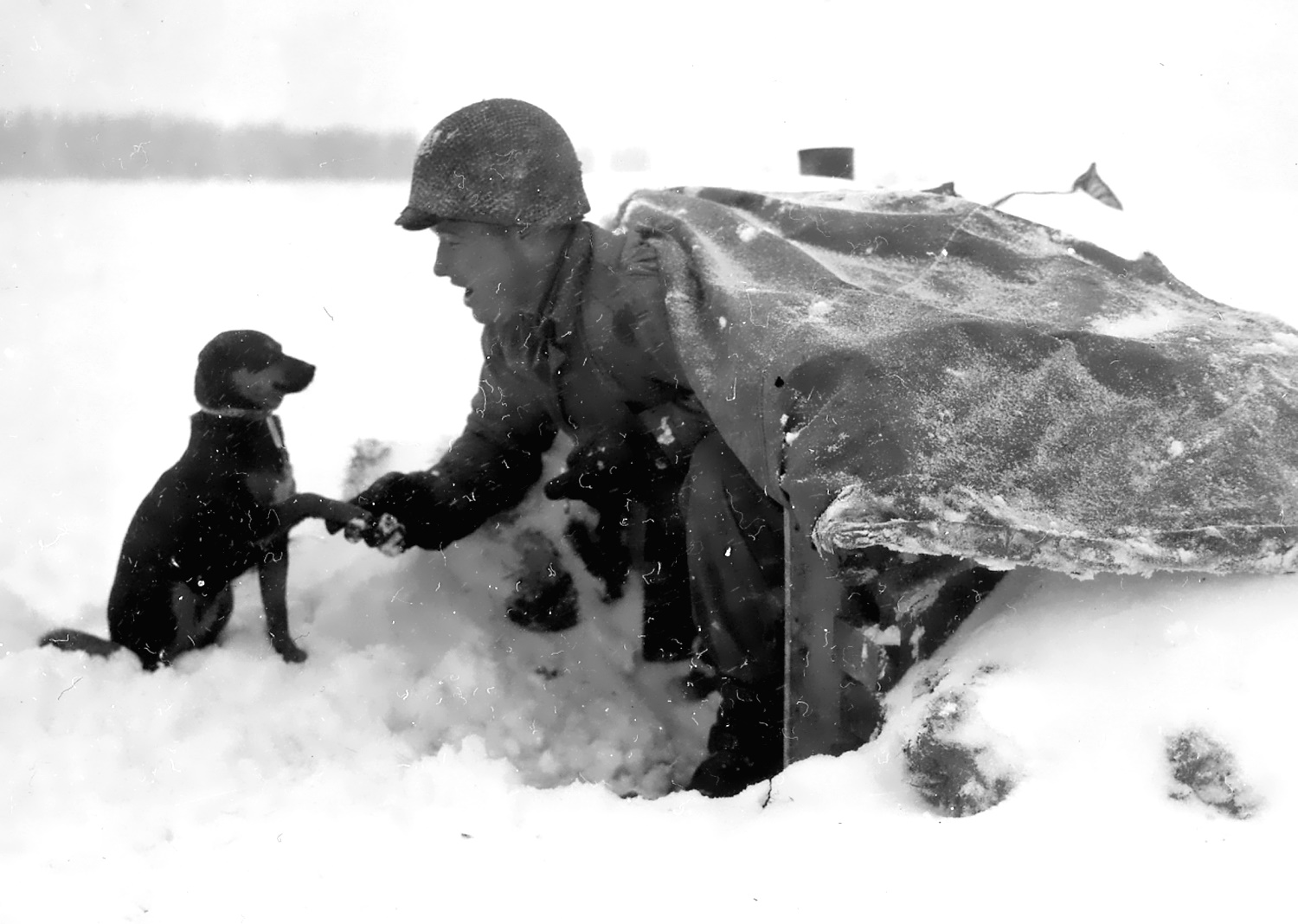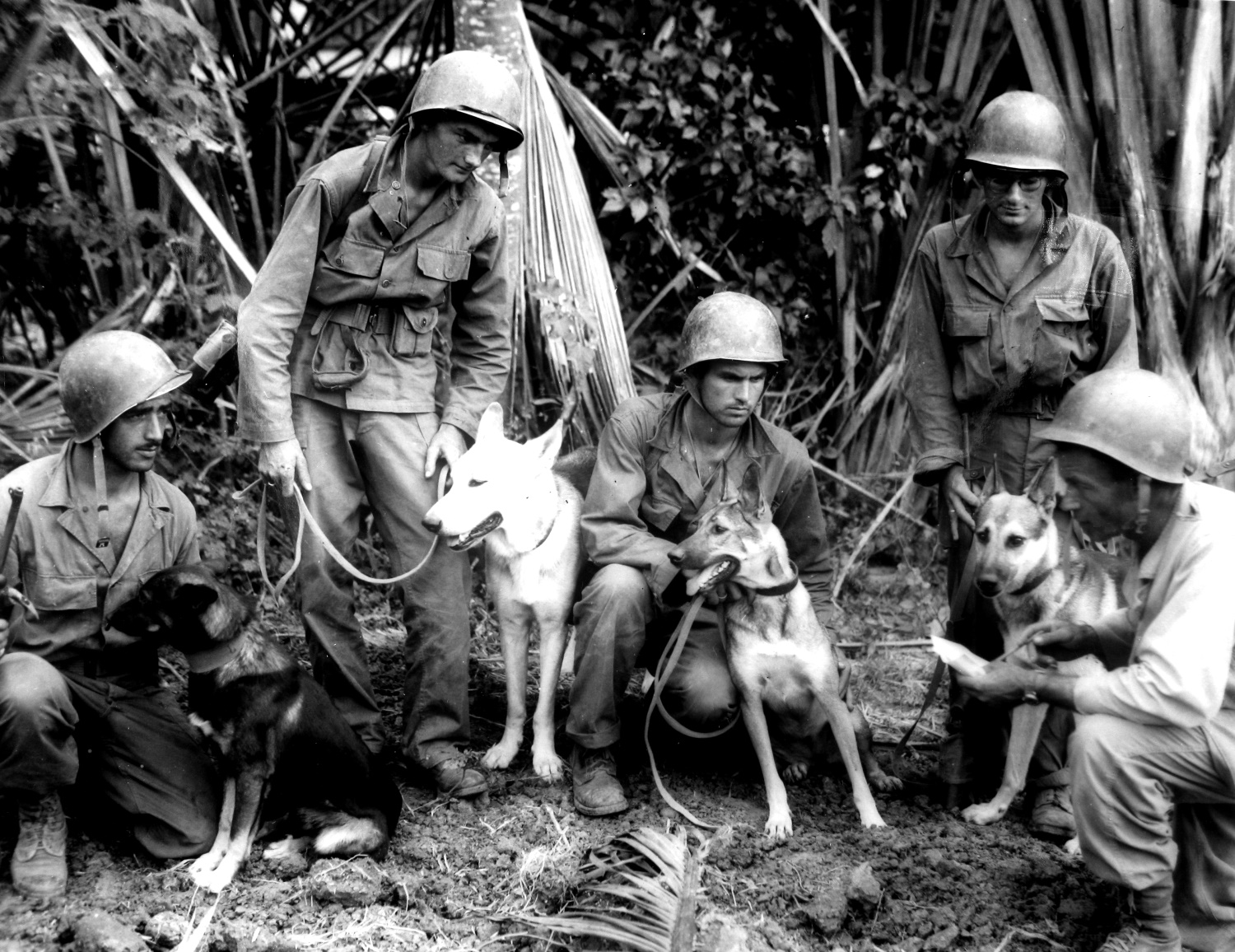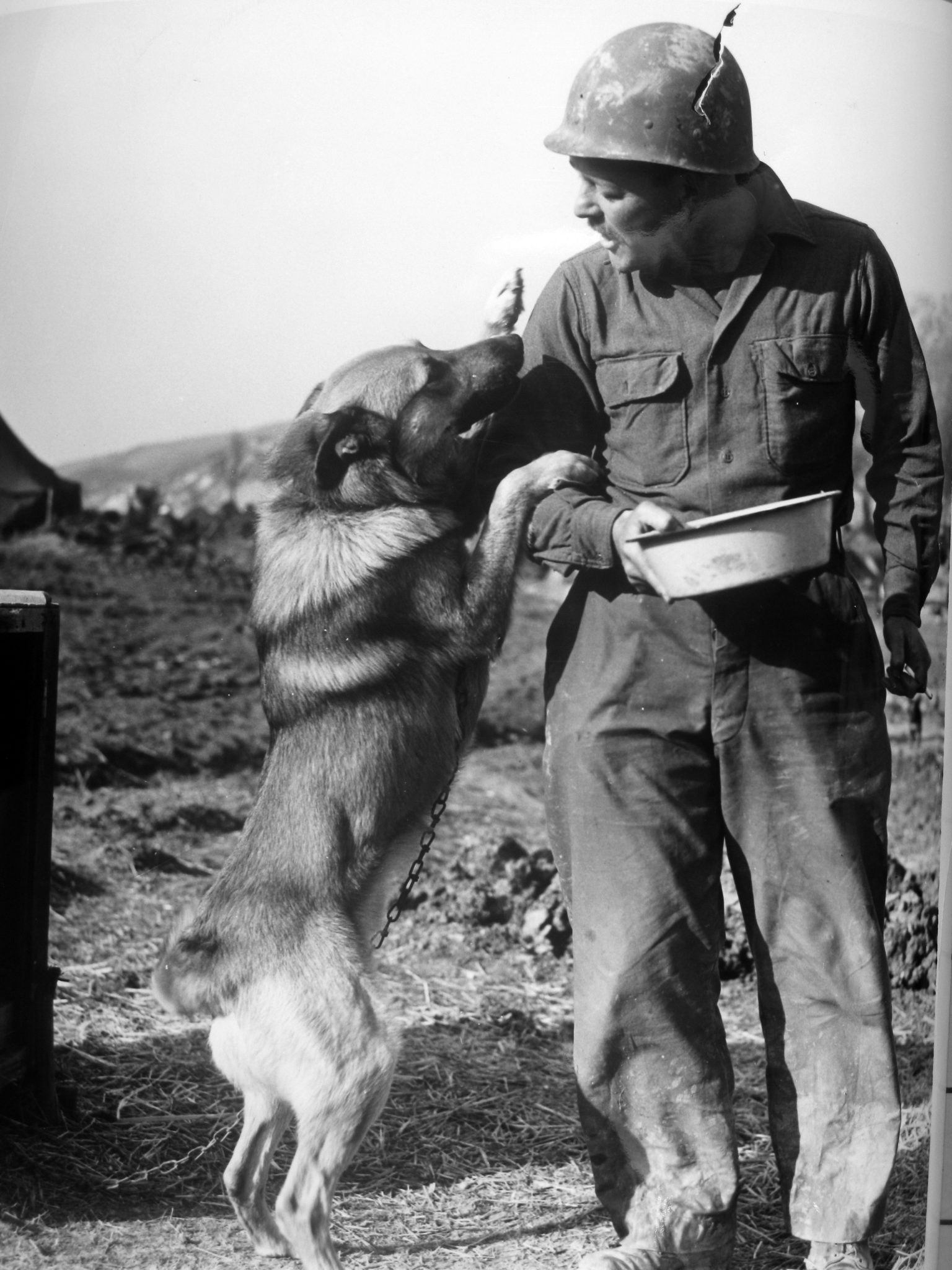Document Source: Photos Archives Collection of the European Center of Military History.
Sorting and searching, as well as compiling, Doc Snafu
There were many, especially those who on the front lines had no other occupation than to kill enemies, to cling to something from real life, life before the war, life at home, to find a kid or an animal and become attached to it. The stories on this subject are very numerous. I could start writing all the anecdotes I have collected so far since the early 1970s but I still believe that one picture is worth 1000 words
Pvt Gene Pecora chats with T/4 Alva M. Pitman and his dog ‘Schicklgruber’ (name of Hitler’s Mother). 1st Infantry Division, Germany, Decemver 7, 1944
The tires shortage will probably cause the mascot of the 766th Light Maintenance Company, 66th Infantry Division, to move out of their new home, where she had just a littler of pups. Cpl Joseph U. Gabriel, 3270 Sanson St, Philadelphia, Pa, left, and S/Sgt Troy Greene, Metter, Ga, make friends with the new pups, Messac, St Nazaire Sector, France, February 14, 1944
Pvt Jesse K. Fennell, 101st Airborne Division, and his dog ‘Dud’ await transportation to the rear after two months of combat. France, November 25, 1944
T/5 Wilbert R. Moran, 11th Airborne Division, leads a pack mule along the Cavite Road in Luzon, P.I. February 3, 1945
1944. A little French girl kissing an American soldier after the liberation of France from German occupation
Messenger Pigeon Charlie wears the Purple Heart he earned while on duty over Metz, France, with the 90th Infantry Division. October 11, 1944
Pvt Jewell Moore, 3rd Armored Division, with his kitten Butch, in Stolberg, Germany, November 16, 1944
Military Police of the 90th Infantry Division on horses in Arzfeld, Germany, February 25, 1945
Pfc Albert Rich with the parrot he brought from Leyte, perched on his M-1 Carbine on Okinawa, April 1945
Pfc L. C. Faver, 1st Infantry Division and his pet ‘Blackie’ near Sourbrodt Belgium, March 1, 1945
Pfc Calvin J. Fontana, 44th Military Police Company, 44th Infantry Division, and his dog ‘Ginger’ at Haiming, Austria, May 237, 1945
American soldiers soothe a little French girl with a puppy, during the liberation of France, 1944
Sgt Harold Rogers and his dog Mister. They completed 25 combat missions over Germany. Sgt Rogers brought the dog home and then returnerd. He was Killed ion Action on July 2, 1944
Pfc Joseph E. Day hols a puppy he named ‘Invasion’ at Le Desert, Normandy, France, July 14, 1944
A pair of 1st Army medics working on an injured French dog they had found amid the ruins of Carentan, France on July 1, 1944. Normandy Campaign
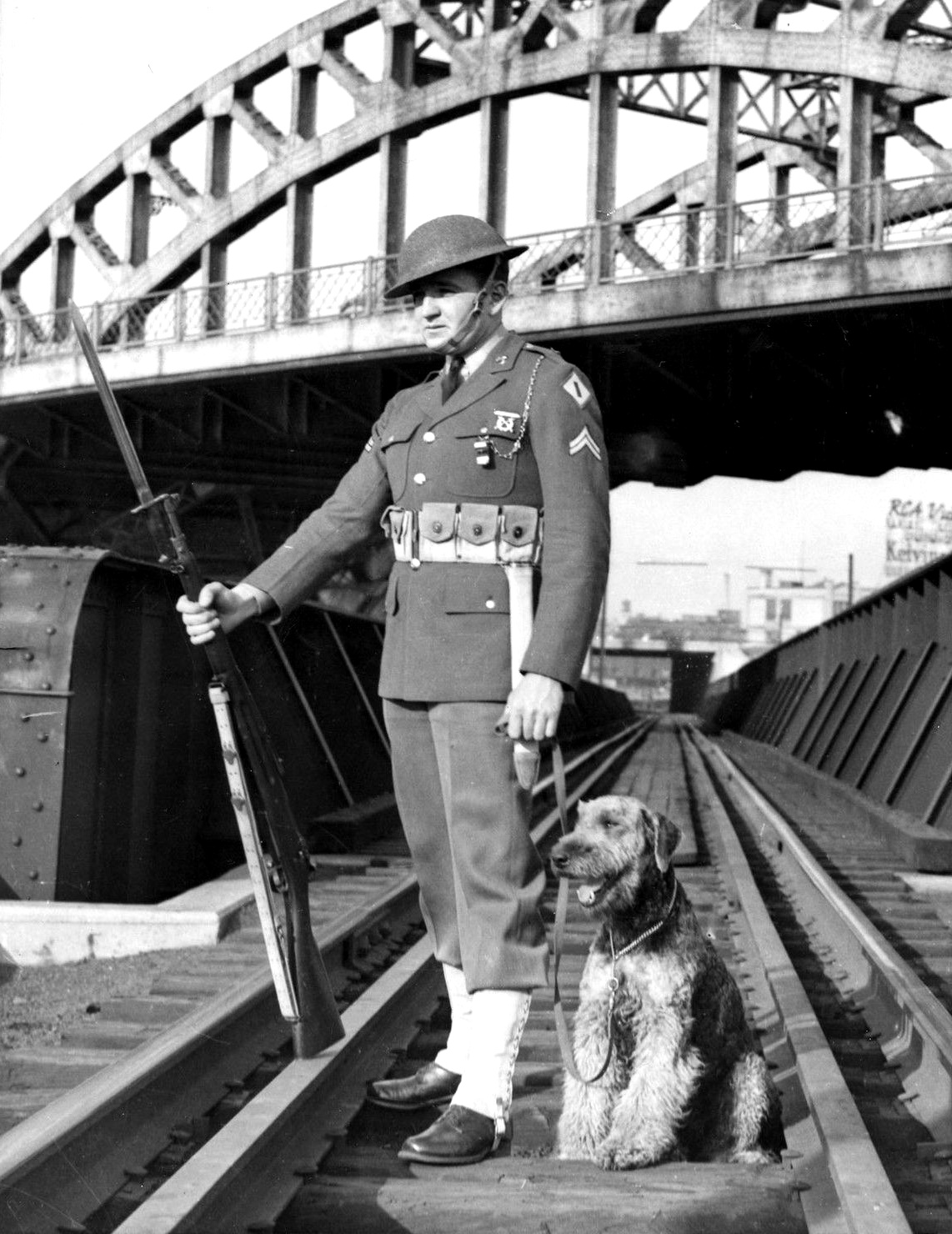
1942, Army Sentry Guard Dog
This could be the reason why it’s called a foxhole
Little Smoky was stuck in a foxhole in New Guinea when she was rescued by Bill Wynne’s army regiment. With Bill by her side, Smoky went on to win an army mascot competition, grace the cover of the GI newspaper, Yank Magazine, become the first-ever Therapy Dog and literally save lives and planes during the war.
Smoky was a Yorkshire Terrier that troops found in a foxhole during World War II. She took part in a dozen missions and over 150 air raids. Her special skill was warning soldiers when there was incoming artillery. She once even pulled a telegraph wire through seventy feet of pipe to help her troops get communications up and running. These are just four examples of how canine soldiers have been essential to our military throughout the years. They perform search and rescue missions, act as security guards, sniff out bombs, locate weapons caches, scout out suspects, and serve as service and therapy dogs for our wounded veterans. They undergo hours of rigorous training to hone their skills in order to serve alongside our human military heroes
I have no caption for this picture, but do you think that words are really needed for this one? (Source)
In the late summer of 1942, the US Marine Corps decided to experiment with the use of dogs in war, which may have been a new departure for the Corps, but not a new idea in warfare. Since ancient times, dogs have served fighting men in various ways. The Romans, for instance, used heavy mastiffs with armored collars to attack the legs of their enemies, thus forcing them to lower their shields. On Guam, 1/Lt William R. Putney commanded the 1st Dog Platoon and was the veterinarian for all war dogs on Guam. (Source)
S/Sgt Stanley Novak stops with his dog for a short rest. It’s a Husky Dog. Could be in Alaska or Iceland, WW-2
I don’t have a complete caption for this picture but I know it was shot during the Battle of the Bulge, in my home town, Francorchamps, Dec 1944 or Jan 1945. 30th Infantry Division
How about moving over, Bud? – A scouting dog and a US Marine who is comfortably occupying a foxhole in Guam, during World War II, 1944
No caption, but Pacific Theater of Operation, USMC
No caption
